#this is just the setting I’m well aware that this is only tangibly monster island related dw dw :)
Text
I’m finally making THE big detailed Monster Island Lore Post.
General setting:
This world operates on the following assumptions:
-Supernatural is the umbrella term for any nonhuman sapient creature.
-Paranormals are rare nowadays and have limited legal protections. (Paranormals are anything besides creatures like vampires and werewolves)
-Persons With Supernatural Diseases are werewolves and vampires and such.
-There are hospital wings for supernatural related injuries and also for newly turned vampires and werewolves
-Generally speaking, supernaturals are only just starting to be treated like real people, but that doesn’t mean social acceptance.
-Chris's show integrates supernaturals and humans into one show, mostly with challenges that don't give them any particular advantage-- The reason he integrates supernaturals is actually for reasons completely unrelated to social progress but that's more like a happy side effect that arose from it— (Chris in-universe is generally considered really liberal or something which is just absolutely hilarious considering the circumstances)
Supernatural creatures were only able to be around in public with legal protections FAIRLY RECENTLY.
like. 2009 kinda recently.
In the 1970s— and ONLY then, before then this was pretty common— There was a whole ass job for Helsings- monster hunters.
They were basically a combination between detectives and assassins--
Think peak McCarthyism (and the red and lavender scares kinda) but worse. And they were only outlawed as a practice officially (before then most were disbanded) in 1995 (in America anyway. Helsing Abolition Act of 1995)
Most of the time the general practice if you find out your relative or friend is a werewolf was to report them because GRAH DANGEROUS MONSTER and all that.
Chris McLean is a well known child actor, performer, and all around TV star that was very active and popular (even at one point being considered a ‘heartthrob’ by a couple of teen magazines in the late 90s).
Around 2004, he sort of went radio silent— people even thought that he’d died, along with other wild rumors. But in 2006, he made a miraculous return to the world of TV and reality TV by announcing that he was setting up a brand new show: Total Drama Island!
The particularly important aspect of the show regarding its casual involvement of supernaturals right next to the rest of the human cast got mixed feedback, but ultimately the show got greenlit.
Werewolves:
Werewolves are people with lycanthropy. (And therefore in the “persons with supernatural diseases” category) Lycanthropy is transferred by bite, in the shifted form on the full moon only. People can’t choose to shift into wolf form (with mild exception). Wolf forms are mildly anthropomorphic wolf like beasts, with eyes unchanged from their human forms. In human form, all werewolves have pointy ears and fangs. Werewolves in general have increased strength and athleticism akin to a human skilled athlete. Also comes with an increase in testosterone.
The most common strain would just be referred to as the generic strain. Everyone knows it. Someone turns into a big muscle-bound bara werewolf, (so mildly anthropromorphic and larger than a human) and out of shift they’re a bit beefier and hairier than most folks and commonly have slightly pointed ears. Shifts on full moons only. Transmissible via bite in wolf form only. Also includes Loup Garous and Black Dogs/Grims/Barghests.
Another strain, rare but not unheard of, would be the Chupacabra strain— Most common in areas with a high vampire concentration and originally made with a vampire who got bitten by a werewolf, but in rare cases of this, a unique strain is formed and transmissible. Not as much hair growth, though sometimes the hair growth is traded for rough skin and hedgehog-like spines on the back and neck.
>>>>Other strains will be listed in the “bonus lore” post. Which is different from the “elaborated lore”.
Vampires:
Vampirism is basically a very weird, slightly magic parasite that definitely doesn’t follow as much logic as werewolves do. Vampirism is technically a bloodborne “parasite” (actually a non sentient symbiote since the host is rewarded with powers) that is transferred by bite, but is entirely up to the turning vampire whether or not their victim turns.
They must drink blood to survive, but any kind of blood works. The sun burns, but it’s more a discomfort most days and can be dealt with pretty easily with sunblock, an umbrella, or clothing that covers the body.
Vampires generally have super speed, and the ability to walk up walls, and They’re harmed by holy water and consecrated ground.
There’s also a weird phenomenon called vampire “royalty”. This actually doesn’t have anything to do with real royalty btw. But essentially, it’s possible for a vampire to “become” “royalty”, which just makes them a different type of vampire whose only real difference is long elegant pointy ears, “inkstained” hands and ears, and mysterious extra abilities. Nobody really knows how this happened, only that it’s something that does happen.
>>>>>vampire royalty is extremely plot relevant.
Paranormals:
The other kinds of supernaturals (called Paranormals) are considered separate SPECIES/RACES, they’re genetically compatible with humans and they’re just kind of another kind of people. More often than not, they’ve got their own isolated cultures that intertwine with the culture of whichever country they’re in.
-Sirens are any kind of aquatic creature. Could be merpeople, could be selkies, etc. They’re amphibious, but unless stated otherwise, can’t walk on land. [But they’ll be unplayable unless they’re explicitly semiaquatic. since this is an umbrella term, you can get extra creative with this…]
-Harpies are bird people, and can retract and extend their wings, but they’re very physically fragile. They have hollow bones, bird feet, they're very light, and they have long tails. (Could be based off of any bird species, and as such will have minor abilities based on that fact)
-Satyrs have goat horns, furry legs with cloven hooves, and short goat tails, as well as furry goat ears. They’re known to be energetic party animals, and are said to have a connection to Dionysus, the Greek god of wine and partying. (Just said to, though, there’s no proof of this)
Links:
- secondary info on werewolves
- secondary info on vampires
- HEADCANON species assignments
- TDI tumblr edition Intro post

#tdi#tdi au#total drama au#tdi monster island#tdmi#this is just the setting I’m well aware that this is only tangibly monster island related dw dw :)
27 notes
·
View notes
Text
Beware of the thief
How do you become the longest-lived criminal in the history of Italian comics? For LUCA MARINELLI it all started as a child, at the zoo. Before the eyes of a panther

«The cold determination of a panther that silently approaches its prey: this is the expression I tried to instill in our Diabolik's gaze». When Luca Marinelli frowns and lights up the panther's eyes - the writer has had the opportunity to get a taste of it during the interview - the first instinct is to flee that look: too intense. It will be him, armed with a dagger and dressed in the famous tight black jumpsuit, with a hood that leaves only the icy eyes uncovered, to interpret the anti-hero born from the imagination of Angela and Luciana Giussani - the two sisters of Milan well known in history as the Queens of Terror - in the awaited cinematic adaptation of the comic directed by the Manetti Bros. (Ammore e malavita), in cinemas from December 31st.
«Fifty years in the homes of Italians. 150 million copies sold. Impressive numbers. Diabolik is an icon, it belongs to the IMAGINARY of hundreds of thousands of people"
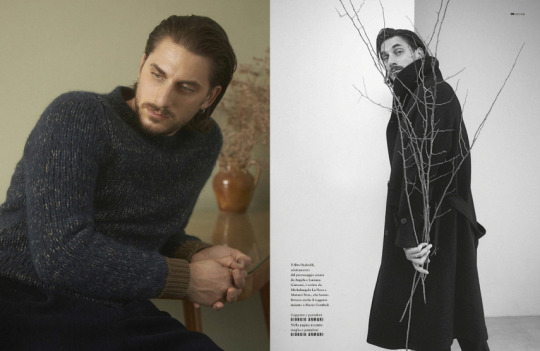
During a walk along the Kreuzberg canal in Berlin, his adopted city since 2012, the Roman actor explains that the choice to be inspired by the feline for the interpretation of the character is not accidental. «Fans will know that Diabolik takes his name from a panther. Their meeting, which lasts a few moments, is significant: after a high-tension face-to-face, the feline decides to spare the boy, almost as if he had smelled a fellow in him. The panther was one of my favorite animals as a child. I remember like it was yesterday the day my parents took me to see it at the zoo, and my amazement in front of that creature, that night-black mantle, shiny and iridescent, with bluish reflections, and that deep, rhythmic breathing. Finally, particularly indelible in my mind is the feeling of sovereign calm that emanated from the animal». “From the beginning, I had a good feeling about this film,” continues the actor. «The first meeting with the Manettis, which I have been following with interest since the time of Zora the Vampire, took place in Rome, in the neighborhood where both Antonio and Marco and I grew up. They explained to me that they had a very specific vision of the character's personality, but that they would like to see what I could offer them. We auditioned together, which was very useful in igniting the spark of collaboration. I have a clear memory of that day and the subsequent exchange of emotions and thoughts. When I later found out that I was chosen for the part, I was very happy».
Luca Marinelli is certainly not new to acting challenges. From the dazed Mattia in ‘The solitude of prime numbers’ (2010), the character with whom he conquers notoriety, over the years he engages in roles that are not very easy, very different from each other ("The only thing they have in common is my nose", ironically, pointing to his face), showing great versatility and an extraordinary capacity for psychological identification. Among his most convincing interpretations, that of the Zingaro in ‘They call me Jeeg’ and that of Martin Eden in the homonymous film by Pietro Marcello, with which he won, respectively, the Silver Ribbon and a David di Donatello as best supporting actor and the Coppa Volpi as best actor. But dealing with a myth like Diabolik, the object of an almost sacred cult, is a new challenge.
«Fifty years in the homes of Italians. 150 million copies sold. Impressive numbers. Diabolik is an icon, and for this reason it belongs to the imagination of hundreds of thousands of people. If you think you can satisfy them all, you start off on the wrong foot: you risk that the final result is not what you really want to stage, but I'm sure the public will not be disappointed, or at least I hope. You will see how much love and respect there was in implementing this transposition", explains the actor, who speaks with full knowledge of the challenge of interpreting an icon: in 2018 he plays a true sacred monster, Fabrizio De André, in ‘Principe Libero’ by Luca Facchini. A friend told him: you're crazy to take this part. But he, careless, immerses himself in the biography of the singer-songwriter, ventures like a shrink into the maze of his psyche, and he returns to the man of that icon, receiving critical acclaim for that insidious role. The only flaw, some malevolent purists observe, is his Roman accent.
Despite being a comic book hero, to face Diabolik, the actor «decided to avoid any comic characterization of the character, trying to give a convincing representation from a human, psychological point of view. Who is this mysterious man, who with his criminal findings terrorizes the rich city of Clerville? What vicissitudes lead him to become a king of crime? Questions that have become the starting point of my research. For months and months, my flat was flooded with comics, scattered all over the place. And for every hundred I read, the Manettis - who I suspect know all the 800 and more numbers in the series - were ready to lend me as many». Day after day, Marinelli has thus sneaked into the lair of the King of Terror: he spied on his objects, opened his wardrobe, rummaged in his drawers. “I fell in love with him, unconditionally, without giving in to the temptation to express a condemnation or an acquittal. It is a precious lesson, which was passed on to me in the Academy: never judge your character. You risk that a distance will form between you and him which, I play hard, is negatively reflected in the quality of the interpretation».
The result is a film that is radically different from the first film adaptation, directed by Mario Bava, in 1968. "Among its strengths, there is a fascinating 1960s aesthetic, made up of machines, costumes, places and a thousand technological inventions of our Diabolik», he says. “To my great pleasure, I was involved in the discussion of the character's look right from the start. Particularly difficult was the development of the mask and the legendary black suit, designed by Diabolik himself and equipped with fantastic characteristics, not repeatable in reality. An almost impossible mission, but after weeks of attempts, thanks to the collaboration of all departments, we arrived at a result that was very satisfied: we did it by working together. I want to emphasize the all together. When you work with the Manetti Bros., this aspect is deeply tangible: everything takes place in an atmosphere of great exchange and collaboration. Many have known each other within the crew for years, and one almost has the impression of having been adopted by a large family, rather than working on a normal set ».
“Who is this mysterious man who terrorizes the rich city of Clerville? What led him to become what he is? For months these questions have been my RESEARCH"

The film - which the Manettis defined as "darkly romantic" - will also tell, to the delight of fans, the prodromes of the love story between Diabolik and his partner in crime, Eva Kant (Miriam Leone). "Two special, different people who first sniff each other with suspicion, only to recognize each other as soul mates," he explains. “I really like their level of complicity. Diabolik, however, is a very tough and reserved character, who rarely shows a feeling: this is certainly one of the differences, perhaps the clearest, between him and me. I am his opposite: as a good romantic and empathetic, I confess, I often cry. I think that doing so can be an important moment of openness, growth and awareness, which we should learn to actively seek. Are you feeling down? Play the saddest song you know and give yourself a treat: enjoy your tears, a friend once told me. Holy words: woe to keep everything inside. You run the risk of walling yourself up alive behind a senseless wall of hardness».
Although "very interesting", the actor prefers to gloss over future film projects out of luck. "At the moment my wife and I (the German actress Alissa Jung) are very busy with our association: we are about to open the headquarters of PenPaper-Peace in Italy, the association founded by Alissa in Germany, with which we built two schools in Haiti after the disastrous earthquake of 2010». As the actor launches into the memories of his first trip to the Caribbean island, the weeping willows of the Kreuzberg canal that framed the interview mentally give way, for a moment, to the lush vegetation of the Caribbean. «Indelible memories. Two years after the disastrous earthquake, I found a country on its knees, surrounded by rubble, pain and despair, but also many smiles and a contagious desire to live", he says. As the name of our association suggests, all you need is a sheet of paper and a pen, and you can give a child education, and with it a possibility, a future. And this not only in Haiti, but all over the world. At the moment we are focusing on a project in Italy that will support the boys and girls who are going through this difficult period of the pandemic».
GQ Italia
Just wanted to translate this interview for the non-italian’s fans ^^ (sorry for my English)
170 notes
·
View notes
Text
Oxygen By Sacha Naspini
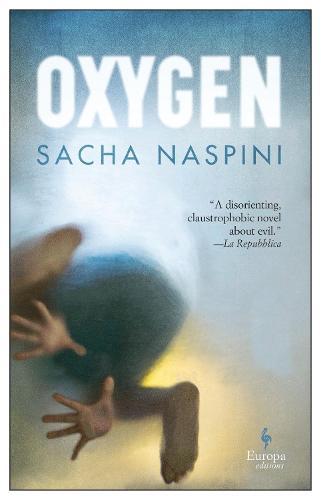
Oxygen
By Sacha Naspini
Translated by Clarissa Botsford
Europa Editions
Release date: 20 May 2021
Published in his native Italy in 2019 as Ossigeno, Sacha Naspini’s UK debut Oxygen is an intense story which dares to go where many crime fiction novels do not. Rather than being preoccupied with a crime or the onetime respected member of the community who has been incarcerated, it focuses on the psychological aftermath to those who have been greatly impacted by his despicable actions. In this case it is to his son and his surviving victim. The Italian magazine Leggere Dona in their review stated that “Oxygen starts where the thriller ends.” Conventionally that is perhaps the case but that should never be a deterrent; this is a gripping and very engrossing read about those left behind and how they try to maintain their lives.
The story is predominantly set in Grosseto on the Tuscan coastline in sight of the Isle of Elba although the location varies slightly as each chapter is told from the perspective of a different character. The first of these is the longest and is told in first person narrative by 29-year-old Luca. On an ordinary evening he and his father anthropologist Carlo Maria Balestri are preparing dinner when suddenly the local Carabinieri police arrive and arrest his father. The charges he faces are multiple counts of abduction, torture, murder and concealing his victims’ bodies. His arrest is due to 22-year-old Laura being found in a metal container where she has been for 14 years. Yet this is only the start of the nightmare.
The narrative starts with Luca reflecting with naked clarity and precision over his life so far. This reveals his complicated feelings for the father he loved and grew up with, particularly after his mother dies prematurely of illness during his young adolescence. He recalls the “tangible proof of my father’s integrity and strength” and how he “held the reins of our life and never let go”. Later we learn of their Romanian housekeeper her father brings to manage the household. Luca in contrast to his school friends is fed “peasant cuisine” such as rice with potatoes or meatball soup. He does retain good memories of his family visits to Elba as a child. He persuades his father to let him make a day trip to the island to meet a girl he has been writing to without being aware that his father uses that day to abduct an 8 year old girl. The guilt he feels at this realization is palpable but unjustified. While the therapist he sees regularly is convinced of his huge progress despite the abandonment and rejection he has faced from those people who he was close to.
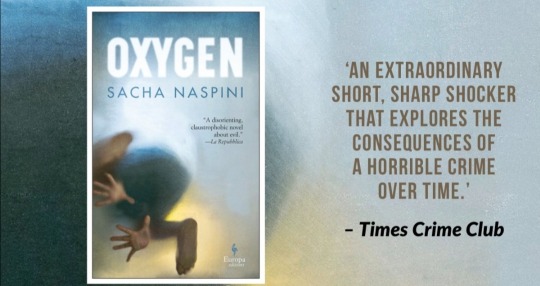
We become aware of some of the physical characteristics that Luca shares with Carlo but later we begin to understand that he has some obsessive character traits that are also similar. While his father’s victims were unknown to him, he is aware of Laura – the girl imprisoned by his father who is discovered alive 14 years later – feeling she is giving him “the oxygen of knowing” that he is not completely alone. This remarkable chapter shows how Luca tries to reconstruct his life from the clues left by his father who the press call “the Monster of the Gulf”. Luca finally resolves to visit the small of area of land that his father secretly owned which contained the container that Laura had been confined within for so many years. Yet there are aspects of Luca’s narrative that are very unsettling and show that he has really not moved on from his father’s actions: “The point is not that my father is my father. The point is, I'm his son.”
The second chapter follows Laura from age 8 in the time immediately prior to her abduction until the time of her release. I’m loath to post spoilers from this time but it is the case that most of Laura’s suffering is psychological. She does grow accustomed to her imprisonment and realises very early into her imprisonment that her capturer is a mean person with no intentions of releasing her. She is given an education and as the time progresses we start to understand that the balance starts to alter between them as he becomes more dependent on her to sustain himself.
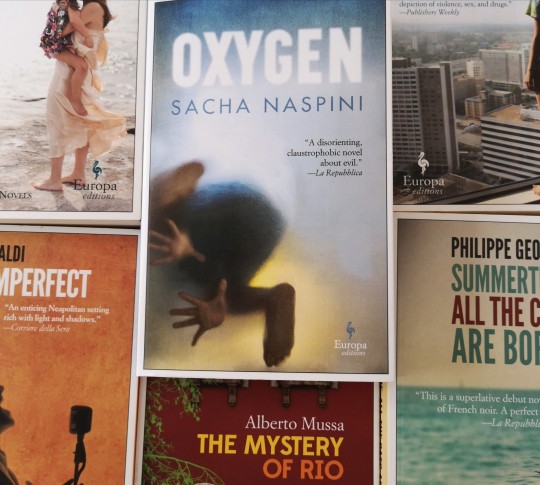
The focus of our attention then switches to Laura’s mother as she first has to reconcile to the loss of her daughter and starts to take “revenge on the world by destroying herself.” After 14 years to get over the trauma she wasn’t ready to start all over. She is conflicted by not feeling exuberant to be with her daughter again. The life she had started planning has to change dramatically. We follow how she perceives her released daughter’s behaviours, in particular the peculiar ways her daughter uses to catch her breath when being in the open becomes suffocating. Indeed, what is most lacking from the book is the Oxygen of the title as you hold your breath turning from page to page. I can imagine it was a challenging translation for Clarissa Botsford but it has been translated exceptionally well, linguistically this is a smooth read without ambiguities.
Oxygen clocks in at less than 200 pages but is immensely powerful showing the deep repercussions of evil and how it is not just Laura who is imprisoned in her memories. Each has become a hostage to misfortune with lasting repercussions. There are no wasted words in a story which leads you to feel empathy for Luca as well as Laura and her mother. The reversal of perspectives within the novel will challenge your perceptions and leave you breathless long before the final revelation. Oxygen truly captures those psychological aspects so elegantly and poignantly in ways which are so often missing from thrillers and I cannot recommend this novel highly enough.
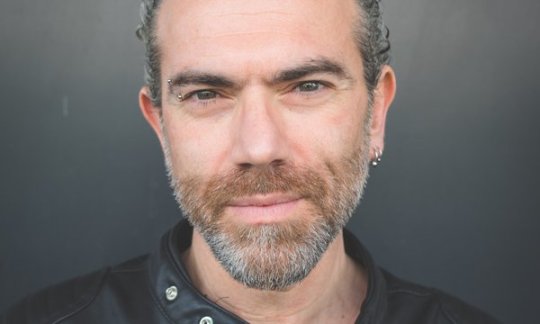
About The Author
Sacha Naspini was born in 1976 in Grosseto, a town in Southern Tuscany. He has worked as an editor, art director, and screenwriter, and is the author of numerous novels and short stories which have been translated into several languages. Oxygen is his first novel to appear in the UK although Nives, also translated by Clarissa Botsford, was released by Europa Editions in North America in April 2021. Nives will be released in the UK in 2022.
0 notes